
Abstract: Compared with other kinds of high-temperature alloys, high-temperature niobium alloy has the advantages of low density, high temperature (600 ~ 1600 ℃) high specific strength, excellent hot and cold forming properties, good welding performance, etc., can be processed and formed into thin-walled and complex shaped parts, used to manufacture parts such as rocket motors, satellites, spaceships, and missiles, attitude control / orbital control engines, such as the extension of the body of the thrust chamber, and it is one of the important candidate materials for aerospace It is one of the important candidate materials for aerospace structural parts. In order to meet the needs of space engines, China has copied and developed a variety of niobium alloys for rocket engines on the basis of American and Russian niobium alloys, among which C-103 and Nb521 alloys are the most used. In this paper, the classification of niobium alloys, the development, application and progress of niobium alloys for aerospace applications are reviewed. It highlights the progress of C-103, PWC-11, Nb521 alloys and low-density niobium alloys under research, discusses the current problems of niobium alloys for aerospace applications, and looks forward to the future development of new niobium alloys with higher strength, higher toughness and lighter weight, as well as the research direction of higher-temperature and long-life high-temperature oxidation-resistant protective coatings.
Keywords: niobium alloys; aerospace applications; C-103; Nb521; low-density niobium alloys
Article No.: 1004-0609(2023)-01-0001-26 CCS: TG146.4 Literature Symbol Code: A
Metallic niobium has the characteristics of low density (8.57g/cm3), high melting point (2741K), high plasticity, good corrosion resistance and low vapour pressure, and niobium alloys have high high-temperature (600~1600°C) specific strength and good hot and cold machining properties, which can be used to make parts with complex shapes, and they are one of the most important candidates for aerospace structural parts [1-5]. It can be used to manufacture key components for rocket engines, space-earth round-trip spacecraft, hypersonic aircraft, satellites, missiles, and nuclear reactors, including shields for combustion chambers of high-thrust space engines, combustion chambers, small-vector or attitude-control nozzles, and extended shields for orbit-control engines [6-7].
In the 1960s, traditional niobium-based alloys began to be used in the aerospace and nuclear industries [8], and the most widely used alloy is the C-103 (Nb-10Hf-1Ti) niobium alloy, which can be used for high-temperature valves, rocket booster tops, and blower blades for turbine intensifiers [9-11]. The extension of the radiation cooling nozzle of the lunar module descent engine of the U.S. Apollo 11 spacecraft is also processed with C-103 niobium alloy and coated with anti-oxidation alumina coating.The combustion chamber of the R-4D reaction control engine is processed and made of SCb-291 (Nb-10W-10Ta) and C-103 niobium alloy [7].In the 1990s, along with the development of aerospace technology In the 1990s, with the development of aerospace technology, countries have launched a new round of competitive development in the fields of rocket engines, satellite attitude control engines, and ultra-high-koroton aircraft, which have put forward higher requirements for high-temperature structural materials, and thus niobium alloys have received further attention again [12].
In response to the needs of the aerospace industry, the United States and the Soviet Union developed more than 20 kinds of niobium alloys and formed their own system. The U.S. niobium alloys are mainly W, Mo and Hf as the strengthening elements, while the Soviet Union is mainly W, Mo, Zr-based, the second phase dispersion strengthening are carbide-based, and are mostly used in high specific impulse, adjustable thrust, and can be started multiple times of the two-component liquid rocket engine. Among them, the United States to C-103 alloy, the temperature up to 1200 ~ 1400 ℃; the Soviet Union to niobium alloy 5 Β Μ Ц (Nb-5W-2Mo-1Zr) alloy is the main alloy, the alloy's density is similar to C-103, but the use of the temperature can be reached 1200-1650 ℃, for a short period of time can be reached 2000 ℃. On the basis of American and Russian niobium alloys, China has copied and researched and developed niobium alloy structural materials for space engines, such as C-103, Cb-752, C-129Y, D43, SCb-291 and Nb521, etc. The most widely used niobium alloys are C-103, Cb-1Zr, Cb-752, C-129Y, D43 and Nb521. Among them, the most widely used are C-103 and Nb521 alloys [13].
Based on the classification of traditional niobium-based high-temperature alloys, this paper highlights the research progress of C-103, PWC-11 and Nb521 alloys, as well as low-density niobium alloys, discusses the current problems in the research of niobium alloys for aerospace applications, and looks forward to the future development direction.
1 Classification of niobium alloys
Niobium alloys are usually classified into six categories according to their strength levels and functional properties: the first category of high-strength, low-plasticity niobium alloys, the second category of medium-strength, medium-plasticity niobium alloys, the third category of low-strength, high-plasticity niobium alloys, the fourth category of high-strength, oxidation-resistant niobium alloys, the fifth category of plasticity oxidation-resistant niobium alloys, and the sixth category of corrosion-resistant niobium alloys [7]. According to density, they are divided into high-density and low-density niobium alloys. According to different functions, they are divided into structural alloys, functional precision alloys and corrosion-resistant alloys. Used in the aerospace field is mainly structural alloys, according to the strength of the broadly divided into three categories of high-strength, medium-strength and low-strength, taking into account the factors of lightweight development of low-density niobium alloys, in order to continuously improve the comprehensive performance of niobium alloys, but also the development of high-strength niobium alloys strengthened by interstitial compounds (carbides, oxides and nitrides). Niobium alloys of various strengths are currently produced or have been studied as listed in Table 1 [7,14-21].
1.1 High-strength, low-plasticity niobium alloys
Generally high-strength, low-plasticity niobium alloys are strengthened mainly by the addition of the alloying elements W, Mo, and Ta, small amounts of Hf and Zr, and trace amounts of C. These niobium alloys have a very high strength and low plasticity. Such niobium alloys are Cb-1, As-30, Cb-132M, F48, Su-31, etc [7], which are mainly used for gas turbine blades. The W, Mo and Ta elements in these alloys are solid solution strengthened, and Hf and Zr can form a diffuse second-phase reinforcing phase with C, giving the alloys higher creep strength. Their solid-phase temperature is higher than pure niobium, the recrystallisation temperature is also higher, and their high-temperature strength is significantly higher than that of medium-strength and low-strength niobium alloys, and the working temperature is generally in the range of 1300~1600℃, with a higher short-time working temperature. As containing W, Hf and other elements, the antioxidant performance has been improved to a certain extent. However, with the increase in the content of W, Mo and other high melting point strengthening alloying elements, the plastic - brittle transition temperature will also rise, its plastic processing performance deterioration, deformation processing is more difficult. In order to ensure a good match between high-temperature strength and room-temperature plasticity, the thermomechanical processing of these alloys must be strictly controlled. In addition, high-strength niobium alloys are mostly in the development stage, and the niobium alloys in industrial production are mostly medium strength and low strength niobium alloys.
1.2 Medium strength, medium plasticity niobium alloys
Medium-strength, medium plasticity niobium alloy is mainly niobium as a substrate, adding no more than 10% (mass fraction) of W, Mo, Ta, V, Ti, Zr, Hf and other metal elements and a small amount of C elements, these alloys are C-129Y, SCb-291, D31, D43, FS85[6], Cb-752[17-18], PWC-11[9], PWC-12[11], PWC-11[12], PWC-11[13], PWC-11[15], PWC-11[16], PWC-11[17], PWC-11[19], PWC-11[20], PWC-11[21] and PWC-11[22]. , PWC-11 [19,22], 5ВНЦ [14,20] and Nb521 [20-21]. These alloys have a strength of 400-600 MPa at room temperature and an elongation at break of 20-30 per cent; they are still quite strong and work effectively at temperatures of 1000-1400°C. The strength of these alloys is also very high. If the time is short, the working temperature can be higher. Because this kind of alloy contains moderate amount of W, Ta, Ti, Zr, Hf, so the recrystallisation temperature is increased to 1150~1250℃. At the same time, because the plastic-brittle transition temperature of this type of alloy is higher than that of pure niobium, the transition temperature in the welded state is generally above room temperature, and it is more sensitive to the interstitial elements such as O, N, H, etc., so it is necessary to strictly control the contamination of O, N, H, and the oxygen content in the alloy must be controlled at less than 8×10-5 (mass fraction). This type of alloy has a certain degree of plasticity and good process performance, and can be used to manufacture a variety of parts and so on, such as masks, bolts and nuts and other components [5].
1.3 Low-strength, high-plasticity niobium alloys
Low-strength, high-plasticity niobium alloy is niobium as a substrate, the addition of the Ⅳ group of elements in the periodic table of Ti, Zr, Hf and other metal elements to form a solid solution strengthened alloy. Alloys belonging to this category include Nb-1Zr for liquid metal containers and pipes [23-24], C-103 alloy for rocket engine thrust chambers, radiation sleeves and heat shielding [9-11,25], and Cb-753 alloy with honeycomb structure for ion engines. The recrystallisation temperature of this class of niobium alloys is about the same as that of pure niobium, generally 1000-1100°C. The temperature of recrystallisation is about the same as that of pure niobium. The room temperature strength of the alloys is generally 320~420 MPa, and the elongation at break is 20%~40%. Such alloys have good welding performance, low plastic-brittle transition temperature, in the (0.37~0.47)TM temperature range and vacuum, after aging treatment, the plastic-brittle transition temperature is still lower than room temperature. These alloys have good plasticity and excellent process properties at room temperature compared to medium- and high-strength alloys, and can be fabricated for components such as piping for liquid alkali metals, turbopumps for space nuclear power generation equipment, and thrust chamber body extensions for attitude-control/orbit-control engines for satellites, spacecraft, and missiles [7,13].
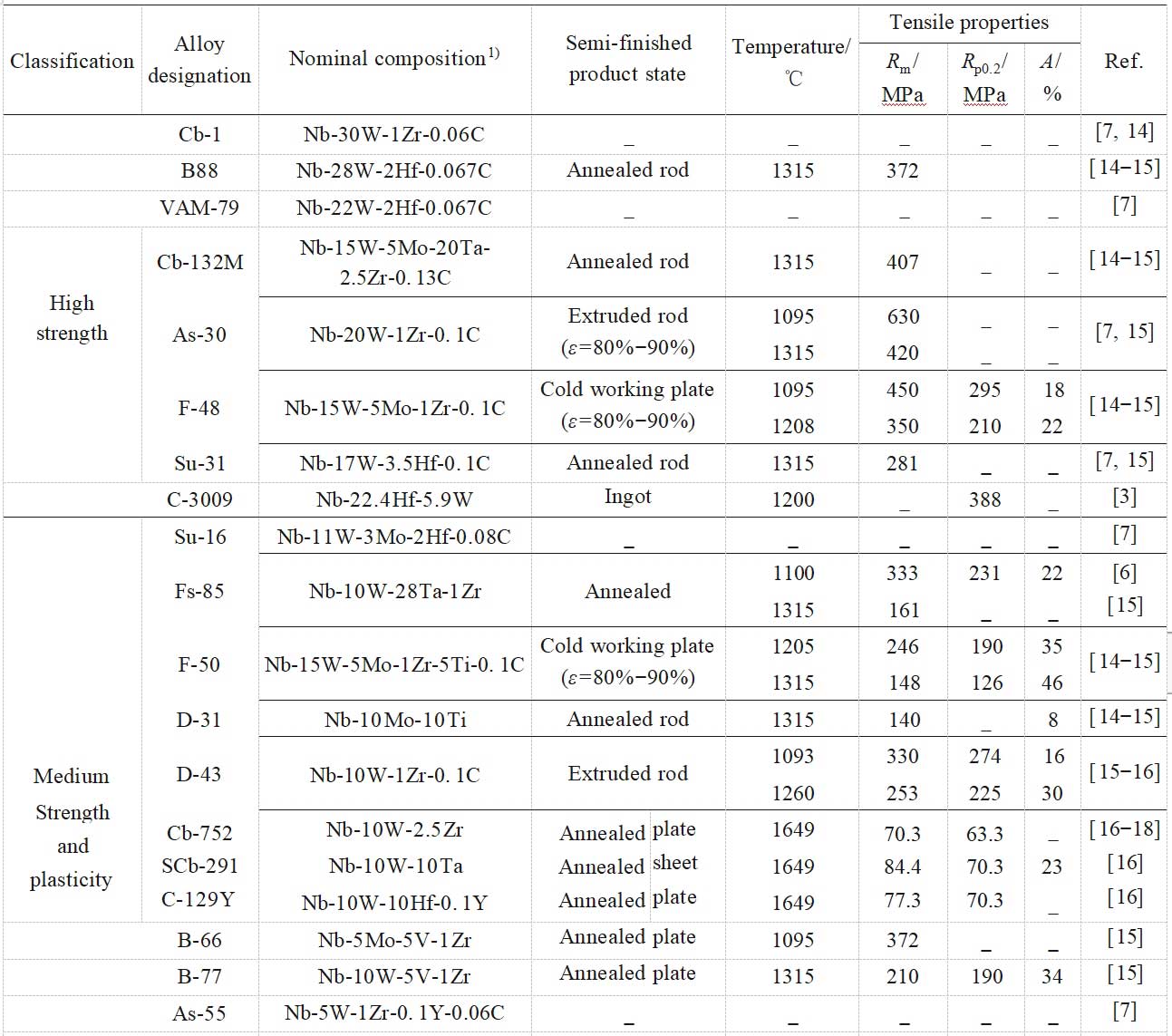

Table 1 Niobium alloys of various strengths
2 Progress and applications of niobium alloys for aerospace applications
At the end of the 1950s, there was a strong interest in nuclear power, aviation and space flight, and the development of relevant niobium alloys began, and the development of commercial conventional niobium-based alloys began in the 1960s. In the United States, the development of niobium alloys earlier units are mainly CANEL, WrightPattersonAFB (WADD), Boeing Aircraft Company, General Electric Company, Union Carbide Corporation and Westinghouse. Among them, CANEL was mainly engaged in the research of Cb-1Zr and PWC-11 alloys, Boeing and TWCA developed C-103 and C-129Y alloys, General Electric Company developed niobium alloys such as As-55, As-30, F48, and F50, and Union Carbide Company developed Cb-752 alloy [26]. Around 1970, the development of medium and low strength niobium alloys has been relatively mature, has been used or trial production of niobium alloys used in rocket nozzles or thrust chambers, mainly C-103, SCb-291, C-129Y, FS85 and so on. Among them, C-103 alloy processing, welding performance is excellent, although the room temperature strength is low, but the overall performance is good, especially at high temperatures, can meet the working conditions of the nozzle. SCb-291 alloy plasticity is good and high-temperature strength is relatively high.C-129Y alloy also has good plasticity and welding performance, but the creep strength is low.FS85 alloy creep strength is high, plasticity medium, welding performance is very good. Performance is very good. In terms of overall performance, the Cb-752 and D43 alloys have high high-temperature strength, moderate plasticity, and good machining and welding properties, and can be selected for rocket nozzles. However, niobium alloys also have a fatal weakness, that is, in the atmospheric atmosphere, high temperature oxidation, that is, above 600 ℃ is very easy to occur "PEST" (oxidation catastrophe, that is, the material from the block into powder) oxidation phenomenon, the need to prepare a layer of antioxidant protection coating on its surface to meet the high temperature requirements of the use of the thrust chamber of the space engine [27].
In the 1970s, people began to study high-strength niobium alloys, the main strengthening mode is still solid solution strengthening or diffusion strengthening two ways mainly, during this period the Soviet Union and the United States have carried out a lot of research on the development of high-strength niobium alloys [12,28-32], China's research in the field of this type of material is still in the blank. With the continuous development of new aerospace products and the need for upgrading, the specific impulse and lightweight of the orbit control/attitude control liquid engine puts forward higher requirements, and the lightweight from the base material is considered to start, so that the development of low-density niobium alloys with a density of less than 8g/cm3 is also developed [32].
In aerospace, the most widely used in the United States is the C-103 alloy, which is used at temperatures between 1200 and 1400°C, followed by alloys such as PWC-11, Nb-1Zr, SCb-291, and FS85 [19,23-24,27]. The coatings are mostly of the silicide system, such as R512A (Si-20Cr-5Ti) and R512E (Si-20Cr-20Fe) [33-34]. The most used alloy in Russia is 5ΒΜЦ alloy, which has a service temperature of 1200-1650°C and is usually coated with molybdenum silicide (MoSi2). China's most used is C-103 and Nb521 alloy [35-37], at present, orbit control / attitude control engine refractory metal materials thrust chamber has formed a "two-generation" series of products. The "first generation" is niobium-hafnium alloy (i.e., C-103) and "815" coating system, and the "second generation" is niobium-tungsten alloy (i.e., Nb521) and "056" coating system. The "second generation" is niobium-tungsten alloy (i.e. Nb521) and "056" coating system [27,36-40]. Physical photographs of the thrust and combustion chambers of our two generations of niobium alloy engines are shown in Figure 1 [37-39]. The physical properties of the two niobium alloys are compared in Table 2 [16,27,40], and their high-temperature tensile properties are shown in Fig. 2. From Fig. 2, it can be seen that the high-temperature mechanical properties of Nb521 are much higher than those of C-103 alloy, and its strength at 1600°C is three to four times higher than that of C-103 alloy, and it has been successfully applied to a variety of orbit-control/attitude-control model engines. Examples of some domestic and foreign niobium alloys used in the aerospace industry are listed in Table 3 [7,13,27,39-40,41-46].

Fig. 1 Physical drawings of thrust chambers and combustion chambers of the first and second generation engines in China [37-39].

Table 2 Comparison of physical properties of two generations of niobium alloys [16, 27, 40]
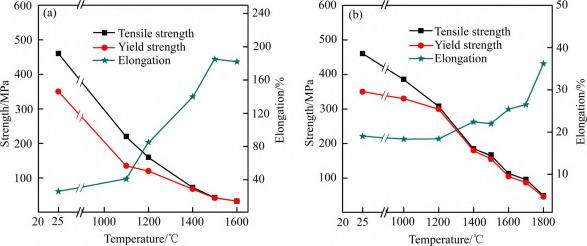
Fig. 2 Tensile properties of two niobium alloys
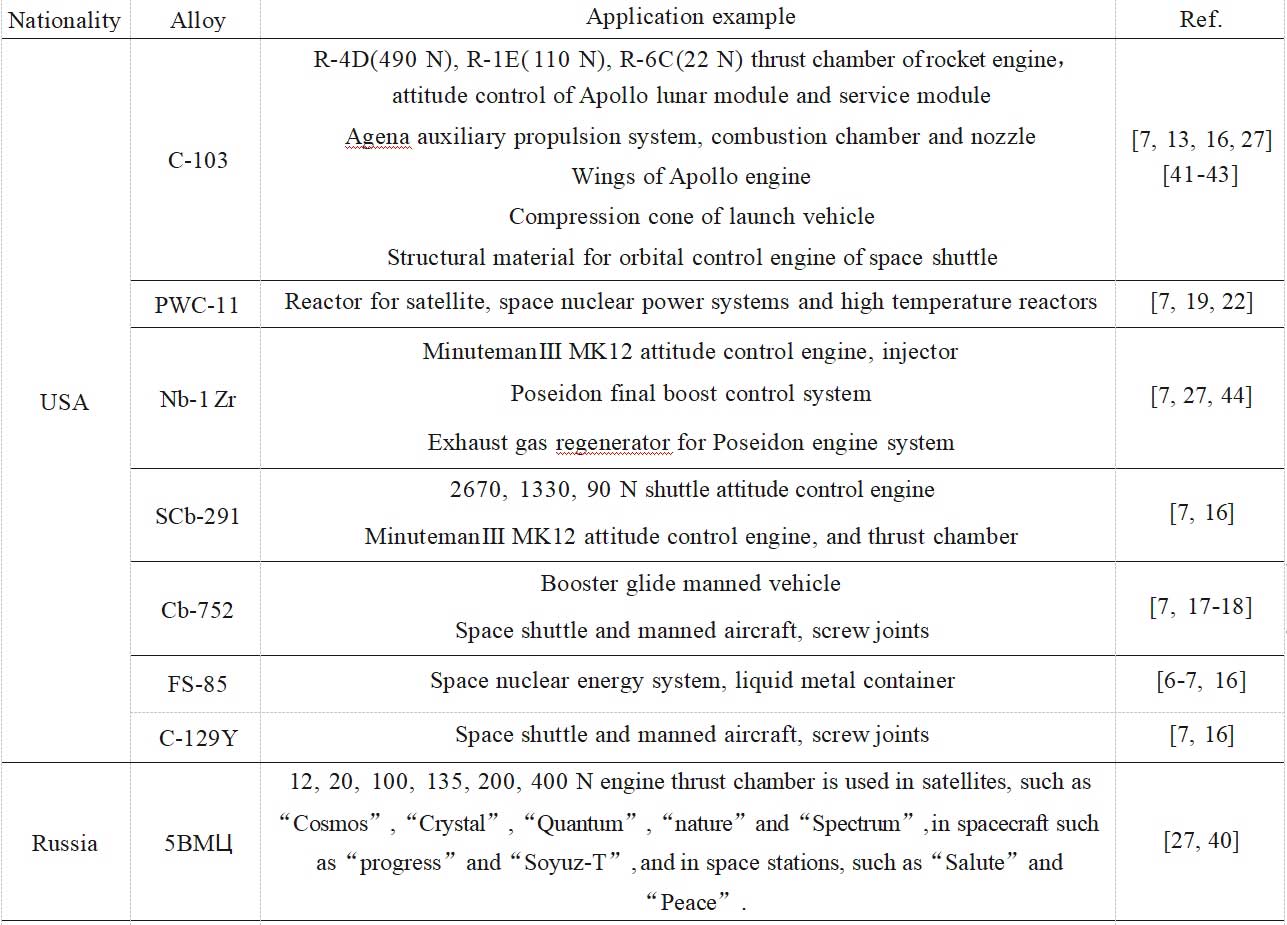

Table 3 Examples of some niobium alloys used in the aerospace industry [7,13,16-19,22,27,36,39-46].
The following is a summary of the progress of C-103, PWC-11, Nb521 niobium alloys and low-density niobium alloys under research and development.

Fig. 3 Stress-strain curves and schematic diagrams of C-103 alloy at different temperatures [47].
2.1 C-103 niobium alloy
C-103 (Nb-10Hf-1Ti) alloy is a kind of low-strength niobium alloy with good high-temperature strength, excellent formability and welding performance jointly developed by ATIWahChang and Boeing, which is widely used in rocket propulsion and other fields, and it is a kind of niobium alloy with a very wide range of applications [9,25,42]. The alloy is copied in China and applied to two-component liquid rocket engines with niobium silicide high-temperature antioxidant protective coating, and the working temperature can reach 1200~1300°C [36].
The alloy is solid solution strengthened by adding Hf, Ti and Zr alloying elements, in which Zr strengthening is more significant, Hf and trace amounts of W are mainly to improve the high temperature performance.PANWAR et al [47] studied the tensile properties and fracture behaviour of C-103 alloy in the temperature range between room temperature (RT) ~ 1200 ℃ (see Fig. 3), in the temperature range between room temperature ~ 1200 ℃, the stress of the alloy The stress-strain curves of the alloys between room temperature and 1200°C showed jagged fluctuations, and the dynamic strain aging (DSA) phenomenon occurred. Among them, dynamic strain aging plays a dominant role in the tensile properties at 900°C; above 900°C, dynamic recovery and oxidation have the greatest influence on its tensile properties. Temperature changes also have a great influence on the fracture mechanism of the alloy, i.e., from room temperature 500°C, 600~900°C and 1000~1200°C, the fracture mechanisms are toughness fracture, disintegration fracture and along-crystal fracture, respectively. In addition, the addition of Hf element also has a role in improving the resistance of the alloy to internal oxidation.SANKAR et al [48] investigated the effect of internal oxidation on the organisational and mechanical properties of C-103 niobium alloy. The microstructure and mechanical properties of alloy specimens with different oxygen contents (1×10-4~2.5×10-4) were characterised and it was found that the strength and plasticity of the alloy gradually decreased with the increase of the average oxygen content, and internal oxidation led to surface embrittlement of the alloy.DHOLE et al [49] found that the industrial C-103 alloy prepared by the Vacuum Arc Remelting (VAR) method has a significant internal oxidation characteristics, i.e., the presence of monoclinic HfO2 at all grain boundaries and coarsened HfO2 second-phase particles at some of the large-angle grain boundaries. Cold rolling cracking occurs during cold rolling even with a small amount of deformation (see Fig. 4). Further microscopic observations revealed the presence of selective cold cracking at the Nb-HfO2 interface. Density Functional Theory (DFT) calculations on the metal-oxide interface model revealed that the chemical nature of the termination layer has a significant effect on the work of separation and depolymerisation. In the termination layer of the Nb-HfO2 interface, the separation energies differ significantly due to the difference in atomic bonding, especially the separation work of the single-atom layer interface between Nb and the oxygen bonded in HfO2 is very low, which is about 8% lower than that of the Nb-Nb interface of the substrate. That is, DFT simulations reveal the decisive role of the termination layer at the metal-oxide interface for interfacial depolymerisation.
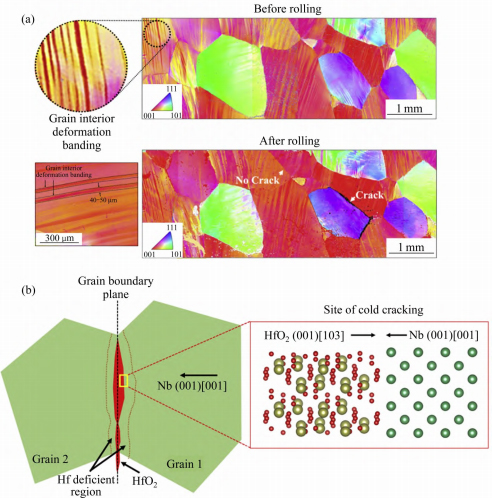
Fig. 4 EBSD antipodal plots of C-103 alloy before and after cold deformation and schematic diagram of Nb-HfO2 interface [49].
The addition of a small amount of Ti to the alloy not only improves the machinability of the alloy, but also improves the antioxidant properties. The interstitial impurities C, N, H, and O elements have a large impact on the mechanical properties of the alloy, and when the oxygen content exceeds 0.1% it will lead to more difficult subsequent cold working. In addition, the alloy in 450 ℃ above the oxidation resistance will deteriorate, so in the hot processing process should pay attention to avoid thermal oxidation, usually more inert gas protection or vacuum equipment. In order to prevent oxidation when used in high temperature condition, the metal surface is usually coated with silicide antioxidant protective coatings [27,50].SANKAR et al [51] prepared Fe-Cr alloy silicide coatings on the surface of C-103 alloy by using slurry coating and vacuum diffusion techniques, and it was observed that the microstructure of the coatings is a three-layer structure, with the outer layer of NbSi2 phase and the inner layer of low silica such as Nb5Si3 and Nb3Si and other low silicides in the inner layer, and an intermediate layer consisting of the Fe-Cr alloy niobium silicide phase and NbSi2 (see Fig. 5). The results show that the coating prevents high-temperature oxidation of the substrate and provides good short-term protection in air at 1100 and 1300°C, and the presence of the coating also improves the tensile strength of the alloy.
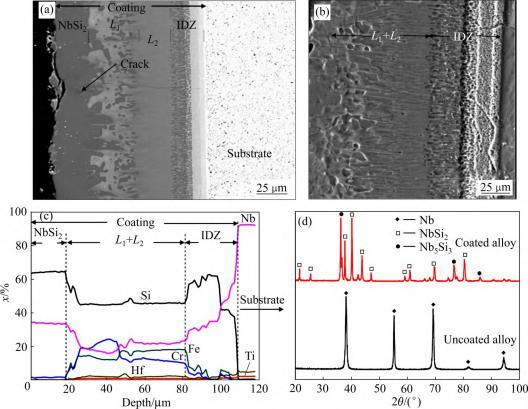
Fig. 5 Microstructure and composition of C-103 alloy with silicide coating [51]
ATIWahChang uses electron beam secondary remelting to prepare C-103 niobium alloy ingots, which are then machined, cladded and sheathed, hot extruded into slabs, and then processed into thin plates by cold rolling. For smaller components or propellers, bars are generally processed directly, while the manufacture of complete, larger combustion chambers requires larger diameter bars, or the bar taper die reverse extrusion forming process can effectively improve the yield and rate of component formation [52].
The good forming properties and stable reliability make C-103 niobium alloy an excellent cost-performance ratio and further promote its application in aerospace.
2.2 PWC-11 niobium alloy
PWC-11 (Nb-1Zr-0.1C) alloy is a niobium alloy with moderately strong plasticity, good resistance to high-temperature creep, and resistance to corrosion by liquid alkali metals developed by Pratt & Witney Aircraft for high-temperature applications, and it has been widely used in high-temperature reactors and space nuclear power systems, etc. [19,53-56].
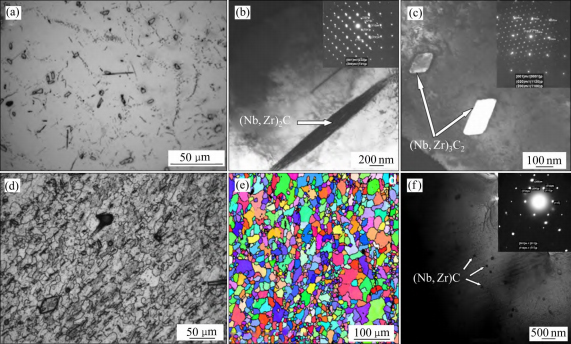
Fig. 6 Microstructure of niobium alloys in the extruded and annealed states [58]
The alloy was strengthened by adding Zr and C elements to Nb to achieve simultaneous solid solution strengthening and precipitation strengthening to increase the high temperature strength of this alloy. Therefore, the carbide precipitation strengthening of PWC-11 alloy then attracts much attention.FARKAS et al [57] confirmed the transformation of Nb, C to a mixture of ZrC and NbC during heat treatment by thermodynamic analysis. Free energy calculations showed that the maximum NbC concentration exists in the mixed carbide particles at a certain aging temperature. The higher the ageing temperature, the higher the equilibrium NbC content in the particles.VISHWANADH et al [58] investigated the microstructure of Nb-1Zr-0.1C alloy in as-cast, extruded and annealed states. The results showed that: the as-cast state organisation is a two-phase organisation, in which the Nb2C precipitation phase is distributed in the matrix in the form of needles; there are two types of precipitation phases in the extruded state specimens (see Fig. 6(a)~(c)), one of them is needle-like ((Nb,Zr)2C with orthorhombic crystalline structure, and the other one is rectangular ((Nb,Zr)3C2 with hexagonal structure); and the organisation in the annealed state shows an equilibrium structure, i.e., the Nb matrix and (Nb,Zr)C precipitates (see Fig. 6(d)(f)).VISHWANADH et al [59] went on to investigate the formation of γ-Nb2C and the interrelationship of other Nb2C carbide phases (α,β) in the Nb-1Zr-0.1C alloy. The results show that the transformation of Nb to γ-Nb2C is achieved by carbon atoms occupying octahedral positions in the Nbbcc lattice, whereas the sequence of phase transitions γ-Nb2C → β-Nb2C → α-Nb2C involves the arrangement of vacancies in a lattice that is essentially the same for all three structures (see Fig. 7). Lattice strain calculations show that the strain due to the carbon atoms occupying octahedral positions arises mainly along the [0001] direction of the Nb2C lattice, and this strain also contributes to the dissolution of the substable disordered structural phase γ-Nb2C phase at lower temperatures. In order to further clarify the formation of various carbides and the Nb2C→NbC carbide transition in the Nb-1Zr-0.1C alloy, VISHWANADH et al [60] prepared the specimens using two methods (i.e., solidified specimen extrusion + recrystallisation treatment and solidified specimen + heat treatment), and found that the alloy contains only α-Nb2C carbides in the solidified state, and when Zr When Zr is uniformly distributed in the Nb matrix and Nb2C phase, α-Nb2C remains stable; when the alloy is extruded or heat-treated, Zr preferentially diffuses into the α-Nb2C carbide phase, destabilising the carbide phase, which precipitates out in the subsequent annealing treatment as a more stable (Nb,Zr)C phase, with the morphology of a sphere or a needle-like shape, which is specifically related to the thermo-mechanical processing of the alloy; if nucleation occurs and the precipitated phase is not formed prior to recrystallisation, and if the precipitated phase is not formed before recrystallisation, then it will be precipitated into a more stable (Nb,Zr)C phase. If nucleation of the precipitated phase occurs before recrystallisation, and the growth of the precipitated phase occurs at the same time as recrystallisation, it is spherical and has no specific orientation relationship with the matrix phase. If the nucleation and growth of the precipitated phase occurs after recrystallisation or in uncrystallised samples, it is needle-like and follows a specific orientation with the matrix phase (see Figure 8).
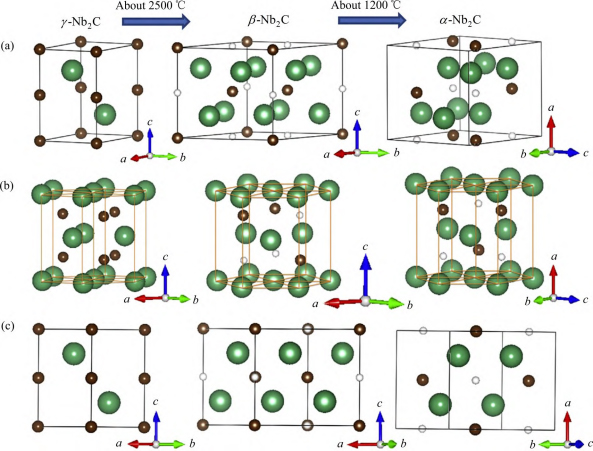
Fig. 7 Schematic diagram of the phase transition of carbide Nb2C in Nb-1Zr-0. 1C alloy [59].
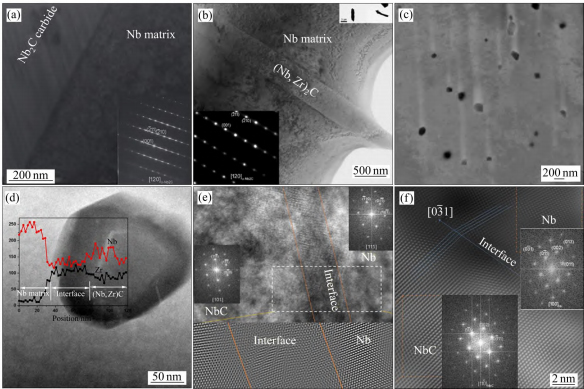
Fig. 8 Microstructure and carbide morphology of Nb-1Zr-0. 1C alloy in solidified, extruded and recrystallised states [60].
Compared with other niobium alloys, tantalum and molybdenum alloys, PWC-11 alloy has very good processing and manufacturing properties.SARKAR et al [61] used vacuum uniaxial compression experiments to study the high-temperature thermal deformation behaviour of Nb-1Zr-0.1C alloy in the ranges of 700~1700°C and 10-3~10s-1 strain rate, and found that the alloy at temperatures greater than 1400°C and a wider The dynamic recrystallisation occurs at temperatures greater than 1400°C and at a wider range of strain rates (10-3~10-1s-1), with better machinability; the dynamic recrystallisation grain size of the material can be altered at appropriate temperatures and strain rates, whereas regions of strain localisation occur below 1000°C and in the range of 10-3~10s-1 strain rates, which should be avoided as much as possible during industrial thermal processing. BEHERA et al [62] also used uniaxial compression experiments to investigate the evolution of dynamic recrystallisation of Nb-1Zr-0.1C alloys with strain at a strain rate of 0.1s-1 and temperatures of 1500 and 1600°C, respectively. The results show that at strains of 0.6 and 0.9 and temperatures of 1500 and 1600 °C, respectively, the dynamically recrystallised grains are distributed in a necklace-like manner along the jagged large-grain grain boundaries; at 1500 and 1600 °C, a fine grain distribution can be observed when the strain is 0.9, and an equiaxial organisation is found when the strain is 1.2 (see Fig. 9); and at 1500 and 1600 °C for all the At 1500 and 1600°C, the recrystallised grains have a strong 〈001〉weave structure.Nb-1Zr-0.1C alloy cannot be applied without welding. Welding of this alloy is a difficult task due to its high melting point and reactive nature [63].BADGUJAR et al [64] investigated the electron beam welding process parameters and microstructure of Nb-1Zr-0.1C alloy, and found that fine carbides precipitated along the grain boundaries in the heat-affected zone (HAZ) and in the base metal, whereas carbides dissolved in the weld zone; the microhardness over the width of the weld distribution showed a slight increase in hardness in the weld zone and heat affected zone; and the thermal and residual stress fields of square butt electron beam welded joints were estimated using the finite element method, and a good qualitative match between the calculated and experimental values was obtained.GUPTA et al [65] studied butt laser welding of Nb-1Zr-0.1C alloy by using inert gas protection at the top and the bottom. It was found that the average hardness of the fusion zone was much higher than the hardness of the base material, and this greater increase in hardness may be due to grain refinement, dissolution of precipitated phases, and formation of brittle phases such as carbides, and established a laser welding technique for the preparation of niobium alloys under ambient atmosphere.
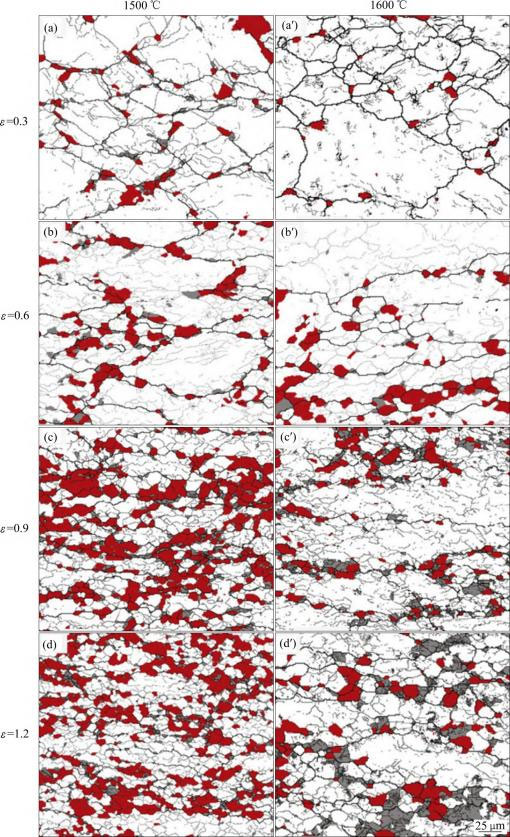
Fig. 9 EBSD plots of recrystallised grains at different true strains at a strain rate of 0.1 s-1 and temperatures of 1500 and 1600 °C, respectively [62].
Similarly, the application of Nb-1Zr-0.1C alloy requires corresponding antioxidant coating protection, and sprayed NbSi2 is still the focus of coating design for this alloy.VISHWANADH et al [66] showed that a two-layer coating structure was formed on Nb-1Zr-0.1C alloy substrate above 1300°C, where one layer was a thin Nb5Si3 inner layer and one layer was a thick NbSi2 outer layer.MAJUMDAR et al [67] investigated the static isothermal oxidation of single (NbSi2) and bilayer (Nb5Si3 and NbSi2) coatings between 800-1300°C and derived a kinetic model to predict the growth kinetics of the NbSi2 phase during the filler silicification process. In addition, MAJUMDAR et al [68] prepared MoSi2 coatings on the surface of Nb-1Zr-0.1C alloys by deposition of Mo using magnetron sputtering and then Si by chemical vapour deposition (i.e., silica encapsulation), and it was found that a bilayer coating with an outer layer of MoSi2 and an inner layer of NbSi2 was formed. MoSi2 coatings consisting of fine crystalline organisation with a thickness of about 25 μm were formed at 1100 °C. The second generation of niobium alloy substrates for metallic materials thrust chambers [27,36,45].
Nb521 niobium alloy is a medium-strength plastic niobium alloy with the addition of W, Mo, Zr alloying elements and a small amount of C to the niobium matrix, which further improves the room-temperature and high-temperature mechanical properties of the niobium alloy by a combination of solid solution strengthening and precipitation strengthening. The alloy can be prepared as ingots by vacuum electron beam melting [69] or vacuum electron beam + vacuum self-consumption melting, and bars, forgings and plates of various specifications are prepared by hot extrusion, forging [70], cold spin forging [71], stretching and rolling [72-73]. The addition of W and Mo elements to the alloy is mainly due to their high melting points and similar atomic radii, which can form a replacement solid solution to achieve the purpose of improving the creep resistance and high temperature strength of the alloy matrix. Zr and C elements are added to the alloy because C is easy to generate diffuse precipitation of reinforced phase with Zr and Nb, playing the role of precipitation strengthening, which can further improve the high-temperature strength of the alloy.
Usually, niobium alloys are diffusely strengthened by stable and fine carbides, oxides, and nitrides, and this type of strengthening is very effective in improving the high-temperature strength. Chunji Zhang et al [36,74] investigated that the carbide strengthened phases of Nb521 alloy are diffusely distributed (Nb,Zr)C, ZrC and Nb2C phases, with ZrC being a diffusely distributed stable carbide phase and Nb2C being a substable carbide phase. Xia Mingxing et al [75] investigated the effect of different contents and sizes of Nb2C particles on the organisation and properties of Nb-W-Mo-Zr-C niobium alloys, and concluded that the addition of Nb2C particles with a content of 0.4% (mass fraction) and a size of about 5 μm could result in the alloy with the highest high-temperature strength.
Nb521 niobium alloy has good room-temperature forming properties, and the uniform transition nozzle extensions can usually be prepared by plate spinning, but most of the nozzles are obtained by machining using rods, which is difficult to machine and the material utilisation rate is also low. Therefore, the study of Nb521 niobium alloy near-net forming and additive manufacturing is an effective way to improve the material utilisation of this alloy.ZHANG et al[76] successfully prepared nano Nb521 alloy powder at room temperature by using a high-energy ball mill and carried out the corresponding analytical characterisation, which showed that the ball milling speed plays a decisive role, and the grain size of 14nm was obtained when the ball milling speed reaches 450 r/min after 60 h. The results show that the ball milling speed plays a decisive role, and the grain size of 14nm was obtained after 60h of ball milling. nanopowders with grain size of 14 nm were obtained. Liu Baoqi [77] studied the Nb521 alloy powder prepared by plasma rotary atomisation method, and found that the alloy powder prepared by this method was mostly spherical and had a high degree of sphericity, with the surface of large particles being rougher, and the surface of small-sized particles being smoother (see Fig. 10), and the distribution of the particle size conformed to the standard normal distribution; the results were analysed by XRD and nanoindentation experiments, and the results showed that only Nb diffraction was present in the Nb521 alloy powder. Only Nb diffraction peaks existed in the powder, and the nano-hardness as well as the maximum load of the alloy powder increased with the decrease of the particle size of the powder.YANG et al [78] prepared Nb521 alloy by the electron beam selective melting (EBSM) method, and the microstructure characteristics of the prepared specimens and ingot specimens were studied in comparison, as shown in Fig. 11. The results show that the content of precipitated phases in the Nb521 samples prepared by the EBSM method increases gradually from the top to the bottom, and the point-like or rod-like precipitated phases with different morphologies are distributed inside the grains or along the grain boundaries, whereas there are needle-like precipitated phases with large aspect ratios in the ingots of Nb521 alloy.In the specimens prepared by the EBSM method, the precipitated phases are mainly (Nb,Zr)C and Nb2C, and the precipitated phases are mainly (Nb,Zr)C and Nb2C with the increase of thermal balance holding time. With the prolongation of the thermal equilibrium holding time, the elongated precipitated phases are partially broken and the grains become fine and uniform.

Fig. 10 Surface solidification morphology and XRD spectra of Nb521 alloy powders of different sizes [77].
In addition, the molybdenum silicide high-temperature antioxidant coating prepared on Nb521 alloy material has a certain self-healing ability and is closer to the coefficient of linear expansion of Nb521 alloy material, so it has good antioxidant protection and bonding properties [74]. In order to further improve the comprehensive performance of molybdenum silicide coatings, SUN et al [79] prepared multiphase MoSi2 coatings on the surface of niobium-based alloys by using two plasma spraying techniques (SAPS and SPS), and defined the melt index of plasma-sprayed MoSi2 coatings in order to characterise the multiphase effect of the coatings, and it was found that the higher the melt index was, the stronger were the mechanical properties of the coatings, and the better were the oxidation-resistant properties.SUN et al. [80] investigated the preparation of MoSi2 based/NbSi2 double coatings on the surface of Nb521 alloy, after 1500°C pre-oxidation for 10h can form a continuous SiO2 barrier on the surface of the coatings, which can effectively retard the thermal corrosion between the MoSi2 based coatings and Na2SO4 salt.XIAO et al [81] used a new two-step method to prepare MoSi2 -NbSi2 coatings and Ce-modified MoSi2-NbSi2 coatings, and the effective protection times of the two coating specimens at 1600°C were 24.7h and 28.5h, respectively, indicating that the Ce-modified coatings exhibited better antioxidant properties.ZHANG et al [82-83] prepared mullite-modified MoSi2 coatings on the surface of Nb521 niobium alloy.
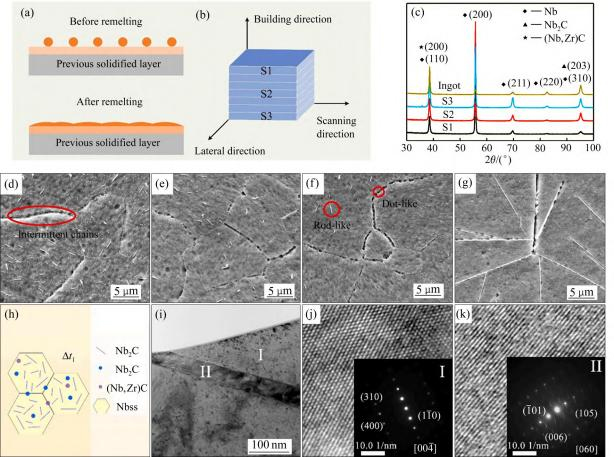
Fig. 11 Comparison of precipitated phases of Nb521 and ingot specimens prepared by EBSM method [78]
2.3 Nb521 niobium alloy
Due to the limitations of the use temperature and high temperature mechanical properties, C-103 alloy and niobium silicide antioxidant coatings have been difficult to meet the ever-developing needs of spacecraft. For this reason, China developed Nb521 (Nb-5W-2Mo-1Zr) niobium alloy on the basis of Soviet 5ΒΜЦ niobium alloy. The alloy adopts molybdenum silicide high temperature antioxidant protection coating, making the operating temperature increased to about 1550 ℃, significantly reducing the flow rate used to cool the combustion chamber propellant, thus effectively enhancing the specific impulse of the engine, and becoming China's current orbit control/attitude control engine refractory (MM) coatings, WSi2 and mullite co-modification of MoSi2 (WMM) coatings and their antioxidant properties. A study was conducted and it was found that the antioxidant performance of the MM coating with 10% (mass fraction) mullite added was very good, while the antioxidant performance of the WMM coating was even better, with an effective protection time at 1500 °C (500 h) that was at least 2.8 and 1.5 times longer than that of the MoSi2 monocoating (175 h) and the MM (346 h) coatings (see Fig. 12). In order to further develop ultrahigh-temperature niobium alloy coatings for higher temperatures, ZHANG et al [84] used a novel three-step method to prepare 10% ZrB2 + 5% YSZ modified Si-Mo-18%W coatings with a boride diffusion barrier, and it was found that the coatings with NbB2-Nb3B2 diffusion barriers could effectively protect the Nb521 alloy up to 1850 °C for 8h or more (see Fig. 13), while the lifetime of the coating without the diffusion barrier is only 3.5 h. The contribution to the superior coating performance is mainly due to the diffusion barrier and the formation of a self-healing SiO2-B2O3-ZrSiO4-ZrO2 oxidation scale, where the diffusion barrier effectively prevents the coating from diffusing with the substrate, which can reduce inward depletion of silicon elements and thus improve the lifetime of the coating.

Fig. 12 Schematic diagram of oxidation mechanism of three different coatings [83]
Afer practice and application in recent years, Nb521 niobium alloy and its supporting high-temperature anti-oxidation coatings have been successfully applied to a new generation of high-thrust carrier rocket gas-oxygen paraffin engine nozzles, Nigerian satellites, XINNO 6 and other attitude control/orbit control engines and the Chinese lunar rover engine and other projects, and is currently the preferred material for the thrust chambers of the refractory metal materials of the domestic attitude control/orbit control engines.
2.4 Low-density niobium alloys
Low-density niobium alloy is also known as lightweight niobium alloy. Due to the addition of a large number of Ti, Al and other lightweight elements and W, Mo and other reinforcing elements, has a low density (<7g/cm3), high room temperature and high temperature strength, and good room temperature plasticity (grain refinement can be shaped by cold machining) and other excellent characteristics, is a can not be coated with a coating in the 550-800 ℃ atmospheric environment for direct use, coated with a coating can be used in the 800-1200 ℃ It is a new type of high-temperature structural material that can be used without coating in 550-800℃ atmospheric environment, and with coating can be used in 800-1200℃ atmospheric environment [85-91]. The United States and the Soviet Union have developed dozens of low-density niobium alloys in accordance with the requirements of the use of temperature and strength, Nb-Ti-Al, Nb-Ti-Al-Cr, Nb-Ti-Al-Hf, Nb-Ti-Al-Cr-Hf and other systems [32]. In foreign countries, low-density niobium alloys have been used in rocket and aircraft engine heated parts, such as the U.S. Pratt & Whitney company to manufacture military aircraft engines with plates for supercharging nozzles [92], Russia for aircraft engine exhaust ducts [93], and similar new ram engine thermal structure components and other aspects of the application [20]. Some foreign grades of low-density niobium alloys and their properties are shown in Table 4 [20,32,86,88,94-98].
The domestic development of low-density niobium alloys began in 2005, and so far it has been in the research and development stage, and there are no alloy grades and products for engineering applications. Up to now, the units that carry out research on such alloys include Zhongnan University, Nanjing University of Aeronautics and Astronautics, Northwestern Polytechnical University, Northwestern Nonferrous Metals Research Institute, and Ningxia Dongfang Tantalum Industry Co. Among them, Zhongnan University, Northwest Nonferrous Metals Research Institute and Ningxia Oriental Tantalum Industry Co., Ltd. three are used in the Nb-Ti-Al system, mainly for the development of a can be used in the liquid rocket engine thrust chamber side skirt parts of the material, the use of the temperature of 1100-1200 ℃, in order to meet the liquid rocket engine on the lightweight of the urgent requirements. Table 5 shows some of the domestic low-density niobium alloy development of the composition and its properties [20,32,99].
Northwest Institute of Nonferrous Metals (NIN) developed low-density niobium alloys are mainly Nb-31Ti-7Al-(3~10)V-1.5Zr, Nb-35Ti-6Al-(2~10)Cr-(3~8)V-1W-0.5Zr and Nb-37.5Ti-5Al-4.5V-0.5Zr alloys and alloy bar, plate processing technology were studied. Among them, Cai Xiaomei et al [99] studied the hot rolling process of Nb-37.5Ti-5Al-4.5V-0.5Zr alloy plates and concluded that the alloys have good room temperature and high temperature properties when hot rolled at 1200 and 1100°C temperatures and that the tensile strength decreases and the plasticity increases as the rolling temperature increases, and that when hot rolled at 1000°C, both the room temperature and high temperature mechanical properties are low, and the room temperature tensile fracture shows brittle fracture. Wang Feng et al [100] studied the vacuum electron beam welding process of Nb-35Ti-5Al-5V-1Zr and NbW521 alloy, the results show that the alloy and NbW5-2 alloy has good welding performance, in the state of no heat treatment after welding, the room temperature tensile strength of the weld samples reached 468MPa, close to the tensile strength of Nb52l alloy matrix. Cai Xiaomei et al [101] studied the forging process of Nb-30Ti-5Al-4.5W-0.5Mo alloy rods, and low-density, high-strength niobium alloy rods with good room temperature mechanical properties were prepared by changing the forging process.
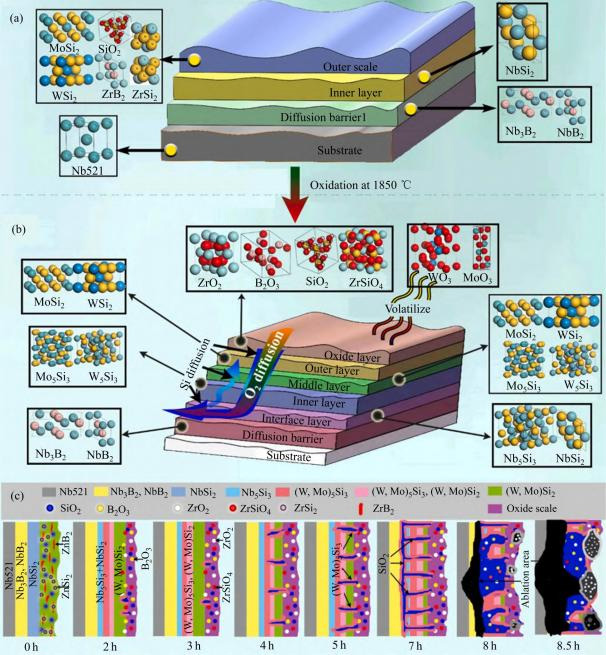
Fig. 13 Schematic diagram of section microstructure and failure process before and after coating oxidation [84]
Ningxia Oriental Tantalum Industry Co., Ltd (OTIC) has successively developed a variety of alloys such as Nb-40Ti-15Al, Nb-40Ti-10Cr, Nb-40Ti-20Cr and Nb-40Ti-10Cr-10A1, etc., and has conducted research on the micro-alloying process of the alloys and the effect of the B-element on the refinement of the alloy grains [102 -103], forming two series of new low-density niobium alloys, Nb-Ti-Al-Cr and Nb-Ti-Al-Zr, and having the production capacity to produce alloy rods with diameters of 30-150mm and plates of (1~3)mm×500mm×500mm. Figure 14 shows the Nb-Ti-Al-Cr-M3 and Nb-Ti-Al-Zr-M8 plates at room temperature for stamping and spinning experiments in the physical parts. In recent years, Nb-Ti-Al-Mo-W-Zr niobium alloys have been developed on the basis of the original ones. Zhao Hongyun et al [104] studied the heat deformation behaviour and microstructure evolution of low-density Nb-Ti-Al-Mo-W-Zr niobium alloy, and obtained the flow stress curves and the constitutive equations for the high temperature deformation of the new low-density niobium alloy. Liu Yanchang et al [105] studied the annealing process of Nb-Ti-Al-Mo-W-Zr niobium alloy plates, and concluded that the alloy can obtain good comprehensive performance by annealing at 900~950℃.
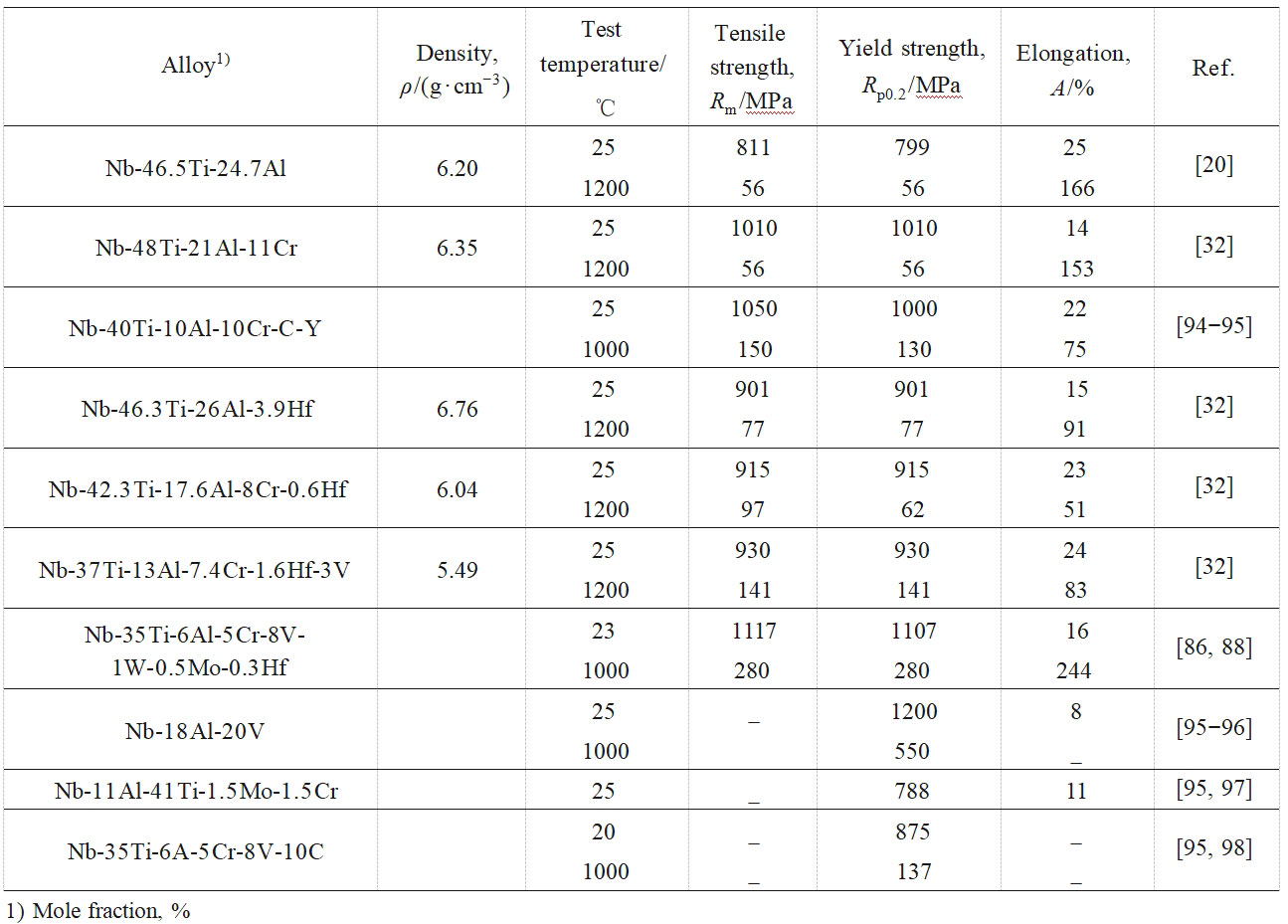
Table 4 Tensile properties and density of some foreign low-density niobium alloys [20, 32, 86, 88, 94-98]
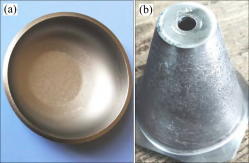
Fig. 14 Stamped and spun parts of low-density niobium alloys [20]
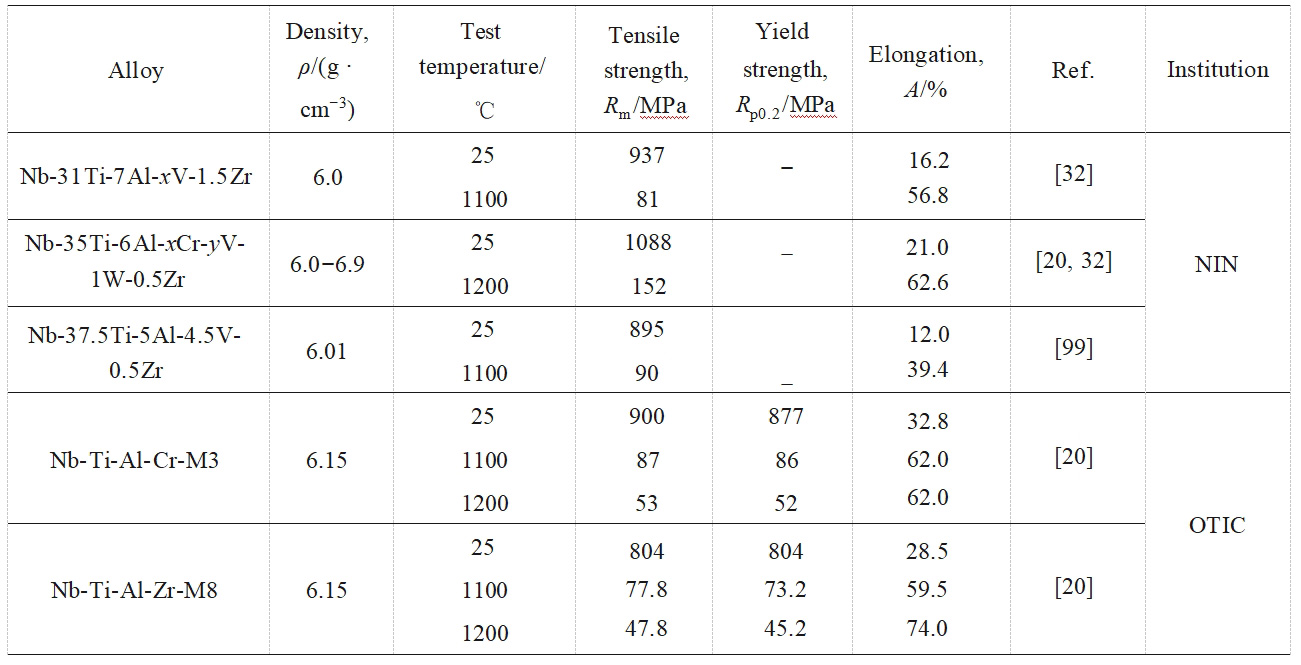
Table 5 Tensile properties and density of some domestic low-density niobium alloys [20, 32, 99]
In addition, ZHAO et al [106] investigated that the addition of Si could enhance the strength of Nb-35Ti-15Al alloy.SHI et al [107] prepared Nb-23Ti-15Al (mole fraction, %) alloy by mechanical alloying (MA) and hot pressing (HP) methods, and studied the organisational evolution of the powder particles during MA and its effect on the organisational and mechanical properties of the HP alloy . Meanwhile, SHI et al [108] also investigated the laser forming of this alloy and its microstructure and mechanical behaviour, and the results showed that an almost defect-free Nb-Ti-Al alloy with fine dendrites could be obtained by laser forming. The presence of β, δ and Ti(O,C) phases in the alloy (see Fig. 15), and the relatively high microhardness and fracture toughness when the β/δ phases are refined and Ti(O,C) dispersed, indicate that laser forming is a potential preparation method that can be used to prepare high-performance Nb-Ti-Al alloys.CHAIA et al. [109] deposited on the surface of Nb-Ti-Al alloys using chloride and fluoride, aluminium compounds and silicide coatings, and high temperature oxidation tests were conducted on the aluminium-silicon coatings in air at 1000°C, which proved that the coatings have certain protective properties.WEI et al [110] investigated the microstructure evolution and mechanical behaviours of Nb-35Ti-4C, Nb-35Ti-4C-15Al, Nb-25Ti-8C, and Nb-25Ti-8C-15Al, and found that the use of C and Al elements significantly improved the mechanical properties of the as-cast and heat-treated specimens at room and evaluation temperatures (see Fig. 16), and with the introduction of the reinforcing phases as (Nb,Ti)C and Nb3A, the plasticity of the alloys was reduced by the appearance of large brittle carbides and the formation of Nb3Al. In addition, Xiao Lairong's team [111-115] also developed low-density niobium alloys such as Nb-40Ti-7Al and Nb-38Ti-12Al, and investigated the hot deformation behaviour, recrystallisation kinetics, high-temperature oxidation behaviour of the alloys, their compatibility with Si-Cr-Ti coatings, and the mechanism of their action in the antioxidant process of the coatings, as well as the effect of the addition of elemental C on the Nb-20Ti-16Al alloy organisation and properties were investigated, and it was determined that the recrystallisation temperature of Nb-Ti-Al alloy was in the range of 880~1000 ℃, and the C atoms were solidly dissolved in the form of replacement atoms in Nbss and Nb3Al, and with the increase of C elements, the volume fraction of the heat-treated alloy Nbss decreases, the high-temperature compression strength increases, and the room-temperature The fracture toughness gradually decreases.

Fig. 15 TEM image of laser-formed Nb-23Ti-15Al alloy [108].
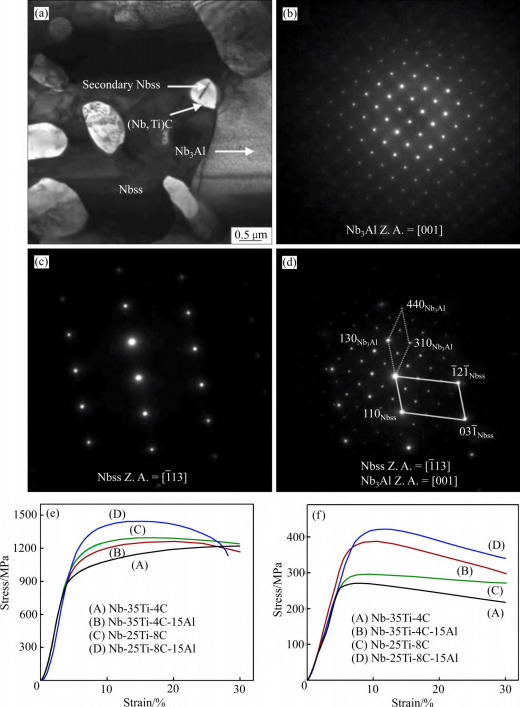
Fig. 16 TEM microstructures of Nb-35Ti-4C-15Al alloys and compressive stress-strain curves of the four alloys at room temperature and 1000 °C [110].
3 Problems and Prospects
With the progress and development of aerospace technology, the requirements for engine performance (e.g., combustion efficiency, payload, and in-orbit operation life) are increasing, which requires further improvement of the specific impulse performance of the engine, making the temperature of the combustion chamber body higher and higher, which leads to higher and higher requirements for the temperature and mechanical properties of the materials used in the engine body. Compared with other kinds of high temperature alloys, niobium alloy has the advantages of low density, high specific strength, good cold forming and welding performance, and it can be processed and formed into thin-walled and complex shaped parts. Therefore, niobium alloys have been widely used in the aerospace field. But at the same time, there are inevitably some unavoidable problems:
1) Currently used niobium alloys are mostly low-strength and medium-strength niobium alloys, in order to meet the upgrading of the engine body materials, there is a need for in-depth research on the mechanism of high-temperature strengthening of high-strength niobium alloys and toughening mechanism, in order to provide theoretical support for the research and development of a new generation of niobium alloys of higher strength, higher toughness or higher strength plastic volume.
2) With the increase of the use of temperature and life time requirements, the current high-temperature antioxidant protective coating technology is also difficult to meet such requirements. In order to meet the new generation of higher strength or toughness of niobium alloy materials for higher temperature environment requirements, must also be developed to match the use of higher temperature, better antioxidant performance of long life protective coatings.
3) Although niobium alloys are among the lightest of the high melting point metals, their density is still slightly heavy compared to the development of aerospace engineering. The lightness of niobium alloys is of great significance for improving the specific impulse of space engines, further extending the range and increasing the payload of spacecraft. Therefore, the development of low-density niobium alloys and the thinning and lightweighting of high-strength niobium alloys is also an important direction for the future development of aerospace engineering.
Therefore, in order to meet the growing demand for high performance of space engines, niobium alloys, which are commonly used in engine thrust chambers, need to continuously improve and solve their own problems, and further develop new niobium alloys with higher strength, higher toughness, and lighter weight, as well as higher temperature and long life high temperature oxidation protection coatings, so as to further promote the application of niobium alloys in the aerospace field.
References: Advances in high-temperature niobium-based alloys for aerospace applications|Baohui Zhu, Xiangdong Wu, Min Wan, Gang Zhao, Yanfei Cao, Wen Luo, Shurong Li, Jilin He - Journal of Nonferrous Metals in China|Priority Publication (ysxbcn.com)
Stardust Technology (Guangdong) Co., Ltd. is a high-tech enterprise specialising in the research, development, production and sales of high-end spherical powder materials in the fields of 3D printing, powder metallurgy and surface engineering. The company adheres to the RF plasma sp